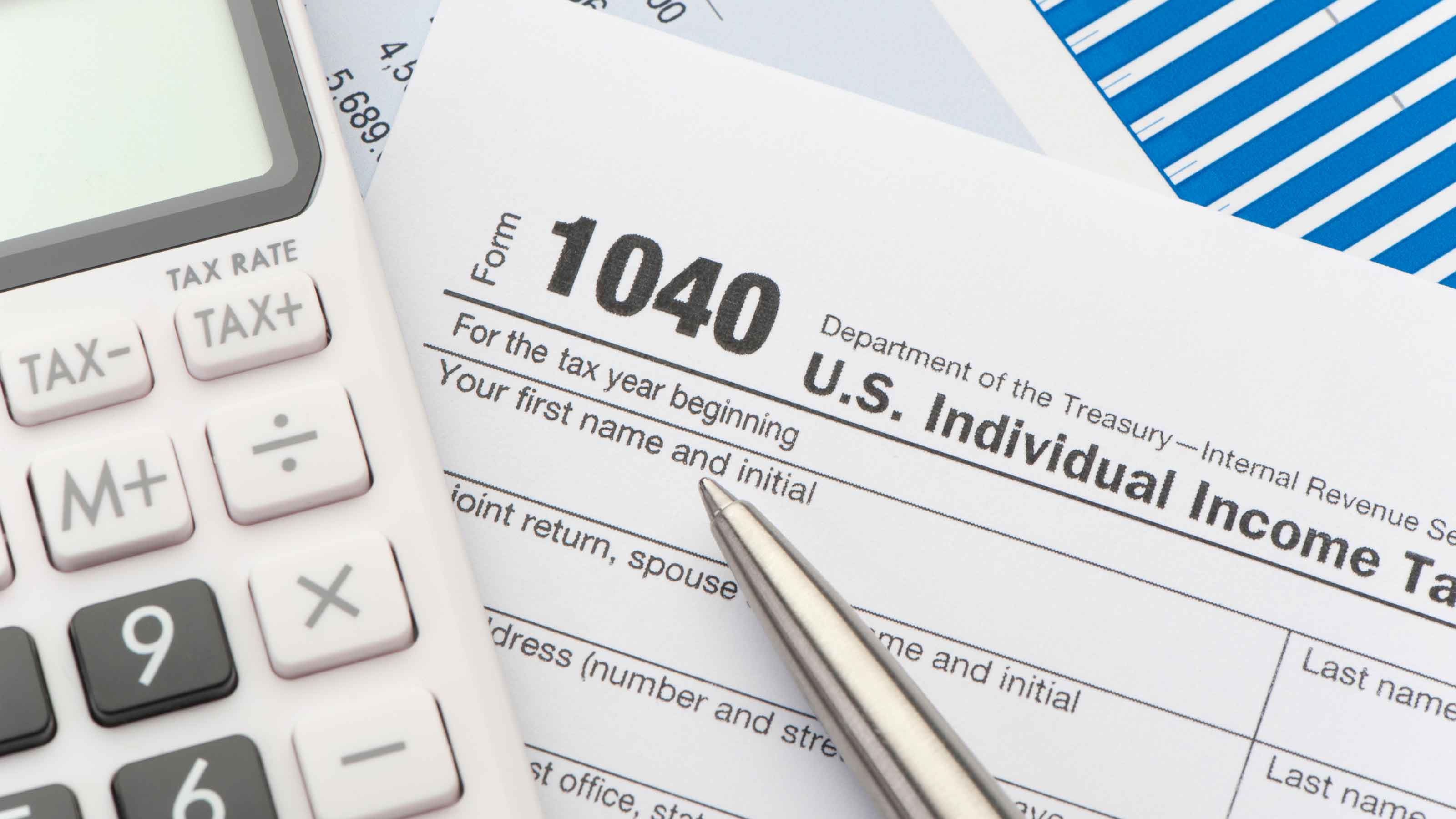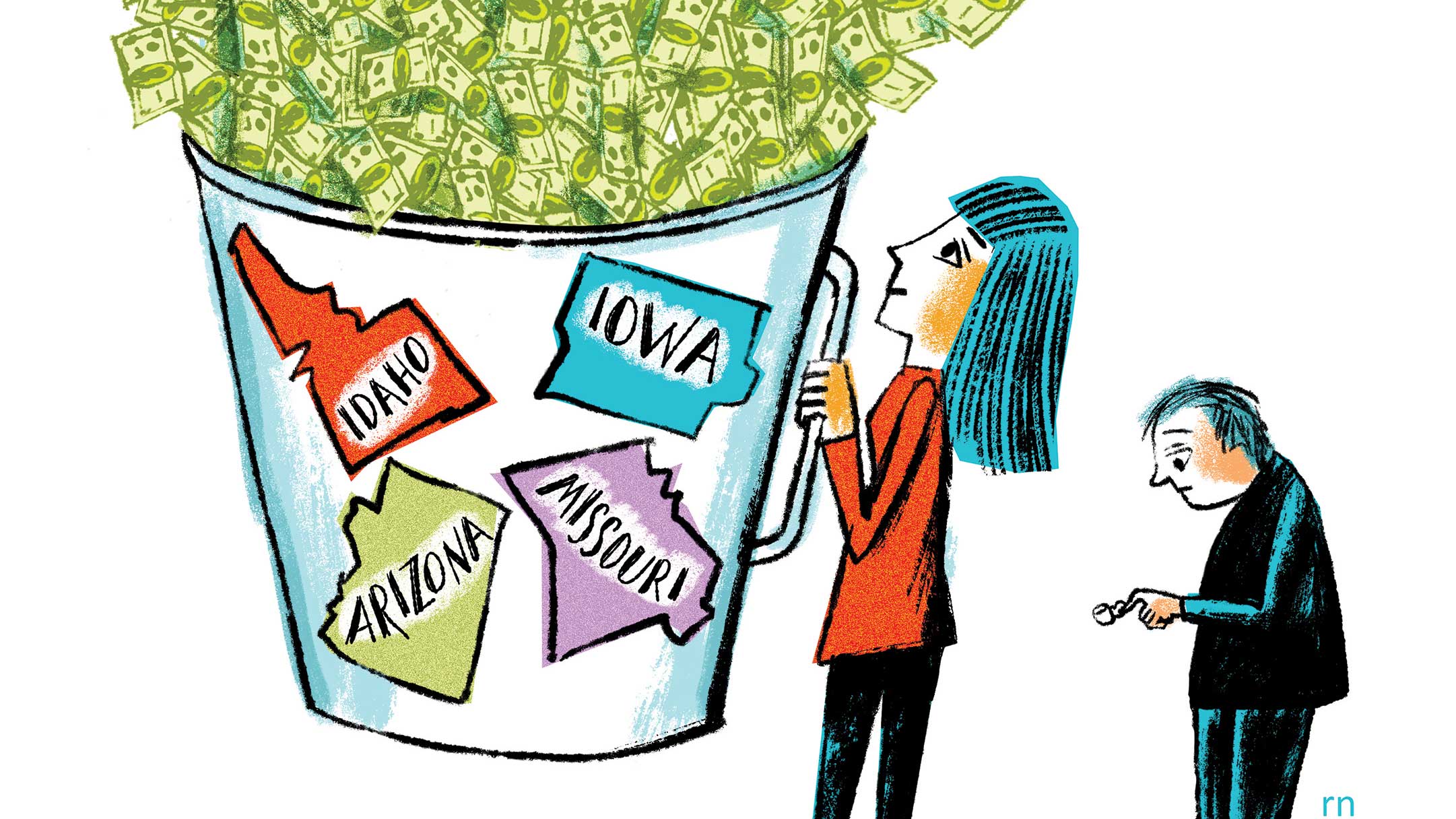Where Clinton and Trump Stand on Taxes
Clinton's plan would raise taxes on the wealthy, while Trump's would cut taxes across the board.


Key differences: Clinton’s plan would increase taxes on the wealthiest Americans. Trump’s would cut taxes across the board — from the lowest-income earners to the top 1%.
Key Clinton quote: “I want to make sure the wealthy pay their fair share, which they have not been doing. I want the Buffett Rule to be in effect, where millionaires have to pay 30 percent tax rates instead of 10 percent to nothing in some cases. I want to make sure we rein in the excessive use of political power to feather the nest and support the super wealthy.”
Key Trump quote: “Middle-income Americans and businesses will experience profound relief, and taxes will be greatly simplified for everyone. I mean everyone. […] Reducing taxes will cause new companies and new jobs to come roaring back into our country.”
From just $107.88 $24.99 for Kiplinger Personal Finance
Become a smarter, better informed investor. Subscribe from just $107.88 $24.99, plus get up to 4 Special Issues

Sign up for Kiplinger’s Free Newsletters
Profit and prosper with the best of expert advice on investing, taxes, retirement, personal finance and more - straight to your e-mail.
Profit and prosper with the best of expert advice - straight to your e-mail.
Under Clinton’s plan, taxes would change slightly or not at all for the bottom 95% of taxpayers, while the top 1% would see sizable increases. This is because Clinton wants to implement a 4% surcharge tax on income over $5 million, plus the Buffett Rule, which would ensure that individuals who earn more than $1 million annually pay a minimum effective tax rate of 30%. She would also cap the value of all itemized deductions at 28% for folks in higher brackets. This limitation would apply to other tax breaks, too, such as the write-off for IRAs and moving expenses. And it would nick some currently tax-free items, such as 401(k) payins, tax-exempt interest, and the value of employer provided medical insurance..
According to the Tax Policy Center, Clinton’s policies would increase taxes by $78,000, or 5% of after-tax income, for the top 1% of taxpayers. The top 0.1% of taxpayers would see an increase of about $520,000, or 7.6% of after-tax income. Middle-income households would see an average increase of about $44, or a tenth of a percent of change.
Roberton Williams, Sol Price fellow at the Urban Institute-Brookings Tax Policy Center, says that Clinton promised to share another proposal discussing low and middle-income tax cuts but didn’t specify its release date.
Clinton’s tax plan has several additional focuses, including estate and business taxes. She would increase the top estate tax rate to 45% and reduce the threshold to $3.5 million for individuals and $7 million for married couples. Clinton also wants to increase taxes on multinational corporations. She would raise the threshold for foreign ownership in inversion transactions to 50% of combined company shares and place an exit tax on unrepatriated corporate profits.
The Tax Policy Center found that Clinton’s plan would increase federal revenue by $1.1 trillion over the next ten years and reduce national debt by 10% of GDP by 2036.
In a speech at the Detroit Economic Club on Aug. 8, Trump modified his proposal for overhauling the tax system. He still wants individual rate cuts, but they’re not as deep as in his original plan. Many said his first plan, with four brackets topping out at 25%, was too costly. Now he sees three brackets, maxing out at 33%, the same as the House GOP plan.
He continues to offer up a 15% rate on corporations and pass-throughs, such as partnerships and LLCs, and would extend the rate to sole proprietors. He favors full expensing for new asset purchases such as buildings and equipment. And he wants to do away with the estate and gift tax.
He’s silent on capital gains for now. His prior plan called for rates from 0% to 20%, compared with a 16.5% top rate under the House GOP blueprint. Also, he gives no details about which write-offs will be on the chopping block. He’ll probably keep breaks for home mortgage interest and donations to charity. But most others would have to disappear to help offset the cost of his proposed rate cuts.
Says Williams of the Urban Institute-Brookings: “The Clinton plan is basically stay as you go. You’ve got a basic tax plan in place right now. She has so far proposed no major changes to that structure other than to raise taxes significantly on some high income people. That’s not a very radical change. Trump’s changes are much bigger.”
Profit and prosper with the best of Kiplinger's advice on investing, taxes, retirement, personal finance and much more. Delivered daily. Enter your email in the box and click Sign Me Up.

-
 Stocks Chop as the Unemployment Rate Jumps: Stock Market Today
Stocks Chop as the Unemployment Rate Jumps: Stock Market TodayNovember job growth was stronger than expected, but sharp losses in October and a rising unemployment rate are worrying market participants.
-
 Should You Renew Your CD?
Should You Renew Your CD?With rate cuts impacting earnings, we examine if now is a wise time to renew CDs.
-
 7 Ways to Plan Now to Save on Medicare IRMAA Surcharges Later
7 Ways to Plan Now to Save on Medicare IRMAA Surcharges LaterUnderstand the critical two-year lookback period and why aggressive planning before you enroll in Medicare is the most effective way to minimize IRMAA.
-
 Kiplinger's Tax Map for Middle-Class Families: About Our Methodology
Kiplinger's Tax Map for Middle-Class Families: About Our Methodologystate tax The research behind our judgments.
-
 Retirees, Make These Midyear Moves to Cut Next Year's Tax Bill
Retirees, Make These Midyear Moves to Cut Next Year's Tax BillTax Breaks Save money next April by making these six hot-as-July tax moves.
-
 Estimated Payments or Withholding in Retirement? Here's Some Guidance
Estimated Payments or Withholding in Retirement? Here's Some GuidanceBudgeting You generally must pay taxes throughout the year on your retirement income. But it isn't always clear whether withholding or estimated tax payments is the best way to pay.
-
 How to Cut Your 2021 Tax Bill
How to Cut Your 2021 Tax BillTax Breaks Our guidance could help you claim a higher refund or reduce the amount you owe.
-
 Why This Tax Filing Season Could Be Ugly
Why This Tax Filing Season Could Be UglyCoronavirus and Your Money National Taxpayer Advocate Erin M. Collins warns the agency will continue to struggle with tight budgets and backlogs. Her advice: File electronically!
-
 Con Artists Target People Who Owe The IRS Money
Con Artists Target People Who Owe The IRS MoneyScams In one scheme, thieves will offer to "help" you pay back taxes, only to leave you on the hook for expensive fees in addition to the taxes.
-
 Cash-Rich States Lower Taxes
Cash-Rich States Lower TaxesTax Breaks The economic turnaround sparked a wave of cuts in state tax rates. But some say the efforts could backfire.
-
 The Financial Effects of Losing a Spouse
The Financial Effects of Losing a SpouseFinancial Planning Even amid grief, it's important to reassess your finances. With the loss of your spouse's income, you may find yourself in a lower tax bracket or that you qualify for new deductions or credits.